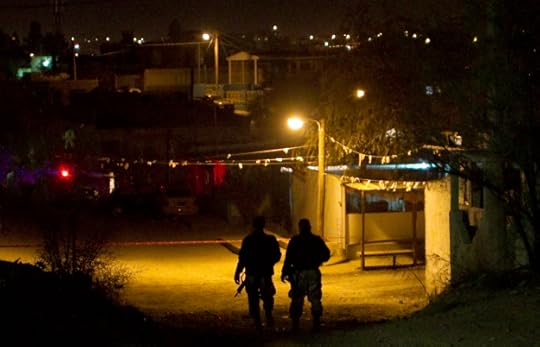Counterterrorism: What the new White House strategy document leaves out

By Matthew Irvine
Best Defense bureau
of keeping your eye on the ball
The Obama administration rolled out the unclassified version
of its long-awaited counterterrorism strategy document on
Wednesday.
Put simply, this is a war plan against al Qaeda. The document
is al Qaeda-centric to the point of being al Qaeda-obsessed. What is striking
about the strategy is not so much what it says about al Qaeda or its repeated
mentions of killing Osama bin Laden (5 of them), but what it left out about
counterterrorism more broadly:
Terrorists who aren't AQ: The document
mentions "other terrorist concerns requiring focus and attention" such as
Hamas, Hizballah, the FARC, and Lashkar-e-Taiba. However, the document does not
address these groups in a substantive way.
State-sponsors of terror: While
recognizing that some states (Iran and Syria) support terrorist organizations,
the strategy does not spell out what this means for broader foreign policy
towards these countries. Pakistan is notably absent from this list despite its established ties to the Haqqani Network, Afghan Taliban, and Lashkar-e-Taiba.
Mexico: The growing violence in Mexico
did not make the cut in the new strategy. With more than 35,000 dead over the last five years,
including numerous government officials, kidnappings, and car bombings, Mexico
is emerging as a principal security question for folks on
both sides of the border.
The Internet: Cyberterrorism and the
increasingly active use of the internet as a virtual safe haven got only
lip-service in the unclassified version of the White House report. As Spencer
Ackerman at DangerRoom points out, this is not an
adequate treatment of what is a growing problem.
Domestic Terrorism: Despite DHS calling
attention in 2009 to the resurgence in right wing extremism, the new
CT strategy does not address this very distinct threat. You don't have to go too far back in time to
see the Unabomber, Tim McVeigh, the rise of right-wing militias as a
pre-eminent counterterrorism concern.
Pakistan: The President's
counterterrorism advisor John Brennan argued on Wednesday that "there's no
alternative to us or to the Pakistanis to ensuring that we continue engaging
with them." I'm left asking: What happens if the United States and Pakistan
don't make up? The United States and Pakistan suffered a bitter divorce in the
1990s. What's to stop that from happening again?
Lastly, what comes next? Brennan also
declared "al Qaeda is in its decline," but went on to warn of an adapting enemy
and AQ network that will pose a persistent threat. The 9/11 Commission cited a failure of
imagination as one of the primary faults in U.S. counterterrorism thinking ten
years ago. After reading the 2011 CT strategy, (and the 2003 and 2007
documents) I am left asking the question: What comes next? What are we missing?
What are we failing to imagine?
Thomas E. Ricks's Blog
- Thomas E. Ricks's profile
- 436 followers



